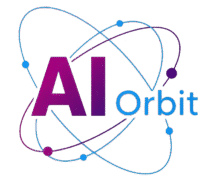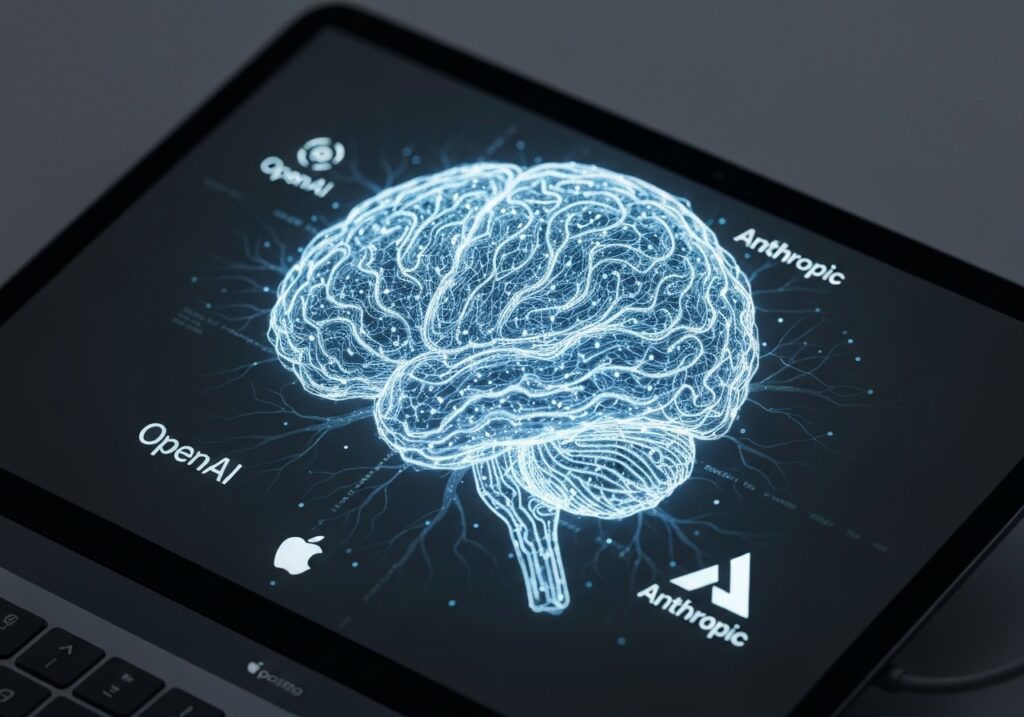THE IMPERATIVE FOR A SMARTER SIRI: WHY APPLE MAY SEEK EXTERNAL AI EXPERTISE
Apple’s long-anticipated overhaul of Siri, aimed at infusing it with advanced AI capabilities, has faced notable setbacks. Originally envisioned as a centerpiece of the broader “Apple Intelligence” suite, the AI-powered version of Siri was slated for release last year but has yet to materialize in a satisfactory form. This delay underscores a significant challenge for the tech giant in the rapidly evolving landscape of artificial intelligence. Recent reports, notably from Bloomberg, suggest that Apple is now exploring a critical strategic move: potentially integrating large language models (LLMs) from leading AI developers like OpenAI or Anthropic into Siri’s core architecture. This potential collaboration, often likened to a “brain transplant,” would represent a tacit admission of Apple’s struggles in developing a cutting-edge conversational AI in-house, while simultaneously offering a promising pathway to elevate Siri’s capabilities to meet contemporary user expectations.
A DECADE OF EVOLUTION: SIRI’S JOURNEY AND THE DAWN OF GENERATIVE AI
When Siri first debuted, it revolutionized human-computer interaction, offering a voice-controlled interface for tasks like setting alarms or making calls. It promised a future of ambient computing where digital assistants seamlessly managed our daily lives. However, over the past decade, Siri, alongside other voice assistants, has largely stagnated in its ability to handle complex, nuanced conversations. Users often find its utility limited to basic commands, frequently encountering misunderstandings or an inability to process multi-step requests.
The advent of generative AI, particularly large language models (LLMs) such as OpenAI’s ChatGPT and Anthropic’s Claude, has fundamentally reshaped the landscape of conversational AI. These models demonstrate an unprecedented ability to understand natural language, generate coherent text, summarize information, and engage in extended, context-aware dialogues. Their emergence has set a new, significantly higher bar for what users expect from an intelligent assistant, making traditional voice assistants like Siri appear increasingly rudimentary by comparison. The chasm between Siri’s current capabilities and the possibilities offered by modern LLMs has become glaringly apparent, creating pressure on Apple to bridge this gap swiftly.
APPLE’S STRATEGIC DILEMMA IN THE AI RACE
Historically, Apple has adopted a deliberate, often “wait-and-see” strategy with nascent technologies, allowing others to innovate before refining and integrating. This approach has served them well in many product categories, ensuring a polished and user-friendly experience upon release. However, its current foray into the generative AI space, especially concerning Siri, appears less a calculated pause and more a scramble to catch up. The delayed rollout of AI-powered Siri, despite its prominent feature in early marketing for Apple Intelligence, highlights the complexities and unexpected hurdles Apple has encountered in its internal AI development.
The company’s Senior Vice President of Software Engineering, Craig Federighi, offered little public explanation for Siri’s absence during Apple’s annual developer conference, fueling speculation about significant internal challenges. This situation presents a stark contrast to Apple’s usual confident posture as a leader in technological innovation. While Apple has often boasted of its “latest and greatest” gadgets and software, its AI advancements, particularly in the conversational realm, have lagged behind competitors who have embraced external partnerships or invested heavily in large-scale model development.
THE POTENTIAL “BRAIN TRANSPLANT”: PARTNERING WITH OPENAI OR ANTHROPIC
The most significant development is the reported consideration by Apple to integrate external LLMs from either OpenAI or Anthropic. These discussions, though not yet finalized, involve using specialized versions of their powerful models, potentially running on Apple’s cloud infrastructure. The choice between these two AI powerhouses is critical, though Apple already has a pre-existing partnership with OpenAI, which currently provides its LLM to power certain features within Apple Intelligence. This existing relationship could streamline integration, but Anthropic’s Claude also represents a strong contender with its robust conversational abilities and enterprise-focused approach.
WHY EXTERNAL LLMS ARE A GAME-CHANGER FOR SIRI
The core reason Apple is reportedly considering this “brain transplant” lies in the inherent strengths of modern LLMs. These models are purpose-built for natural language understanding and generation, making them a natural fit for a voice assistant. Unlike traditional rule-based or narrow AI systems that Siri has historically relied upon, LLMs can:
- Understand Context and Nuance: They can interpret complex, ambiguous, or multi-part requests, maintaining context across turns in a conversation.
- Generate Human-Like Responses: Their ability to produce coherent, relevant, and grammatically correct text makes interactions feel more natural and less robotic.
- Access and Synthesize Vast Knowledge: Trained on immense datasets, LLMs possess a broad general knowledge base, enabling them to answer a wider array of questions and provide more detailed information.
- Perform Complex Tasks: Beyond simple commands, they can facilitate tasks requiring reasoning, summarization, or creative text generation.
For instance, instead of just setting a single timer, a user could ask Siri to “set a timer for 15 minutes for my pasta, and then another one for 30 minutes for the sauce, and remind me to chop the garlic in between.” A capable LLM could handle such a multi-step, contextual request. For users, this means moving beyond simple commands to sophisticated, multi-turn conversations. Tools like Free ChatGPT and Anthropic’s Claude have already demonstrated the power of advanced conversational AI, setting a new bar for what users expect from their digital companions.
NAVIGATING THE BUILD-VS-BUY DILEMMA
Apple’s contemplation of this partnership reflects a classic “build vs. buy” strategic dilemma. Developing a foundational LLM of comparable scale and sophistication to those of OpenAI or Anthropic is an incredibly resource-intensive undertaking, requiring massive computational power, vast data, and highly specialized talent. By partnering, Apple could:
- Accelerate Time to Market: Implement advanced AI features much faster than building from scratch.
- Leverage Existing Expertise: Tap into the years of research and development already invested by AI leaders.
- Reduce R&D Costs: Mitigate the immense financial outlay required for developing a top-tier LLM.
However, a partnership also entails trade-offs, particularly for a company as notoriously private and control-oriented as Apple. Concerns might include:
- Data Privacy: How user data would be handled when processed by third-party models, even if hosted on Apple’s cloud.
- Loss of Control: Less direct control over the core AI’s development, updates, and ethical guardrails.
- Dependence on External Vendors: Potential reliance on another company for a critical piece of its ecosystem.
- Brand Perception: A potential admission that Apple’s internal AI capabilities aren’t sufficient.
Despite these concerns, the urgency to deliver a competitive AI experience might outweigh the desire for complete self-reliance, at least in the short to medium term.
IMPACTS ON THE USER EXPERIENCE AND APPLE’S ECOSYSTEM
Should Apple successfully integrate a powerful LLM into Siri, the impact on user experience would be transformative. Siri has long been a source of frustration for many users due to its limitations. A “smarter” Siri could elevate its role from a mere voice interface to a genuinely intelligent digital companion, seamlessly integrated across Apple’s vast ecosystem of devices and services.
ENHANCING PRODUCTIVITY AND DAILY LIFE
A Siri powered by an advanced LLM would mean:
- More Natural Interactions: Users could converse with Siri more fluidly, asking open-ended questions and receiving comprehensive, conversational answers.
- Advanced Task Completion: Siri could handle complex requests like “Find all photos of my cat from last summer where he’s wearing a hat, then create a shared album for my family.”
- Contextual Awareness: It could better understand personal context, preferences, and past interactions to provide more relevant assistance.
- Deep Integration with Apps: Beyond basic app control, Siri could orchestrate complex workflows involving multiple applications, such as drafting an email based on information from a calendar event and a web search.
This level of functionality could finally deliver on the decade-old promise of voice assistants becoming indispensable tools in daily life.
THE PRIVACY PARADOX AND APPLE’S REPUTATION
One of Apple’s most steadfast commitments has been to user privacy, often emphasizing on-device processing to keep user data secure. Integrating a third-party LLM, even if specialized and cloud-hosted, could introduce complexities regarding data privacy. Apple would need to carefully articulate how user data is anonymized, secured, and processed to maintain trust. The company’s reputation as a privacy champion is a significant asset, and any perceived compromise could undermine its standing. Bloomberg notes that Apple’s in-house efforts to build an AI Siri are still underway, suggesting that any external partnership might be a temporary measure or a hybrid approach, allowing Apple to eventually transition to its own fully developed solutions as they mature. This layered strategy could help balance immediate competitiveness with long-term strategic independence and privacy goals.
THE BROADER IMPLICATIONS FOR THE AI LANDSCAPE
Apple’s potential partnership with OpenAI or Anthropic sends a ripple effect across the AI industry. It underscores the incredible concentration of cutting-edge LLM technology within a few key players. For OpenAI and Anthropic, securing such a high-profile partnership would be a massive validation and a significant revenue stream, further solidifying their positions as foundational AI providers.
For competitors like Google and Amazon, who already have their own robust LLMs (like Gemini and Alexa’s underlying models), this move by Apple could intensify the AI race. It highlights that even tech giants with immense resources might find it more pragmatic to collaborate than to compete on every front of AI development, especially in areas where others have a significant head start. The future of digital assistants appears to be moving towards a hybrid model, where device makers integrate best-in-class LLMs, whether proprietary or third-party, to deliver the sophisticated, natural language interactions that users now demand. The era of the simple voice command is rapidly fading, replaced by the expectation of truly intelligent and conversational AI companions. Apple’s decision will not only shape the future of Siri but also influence the broader dynamics of the AI ecosystem.

